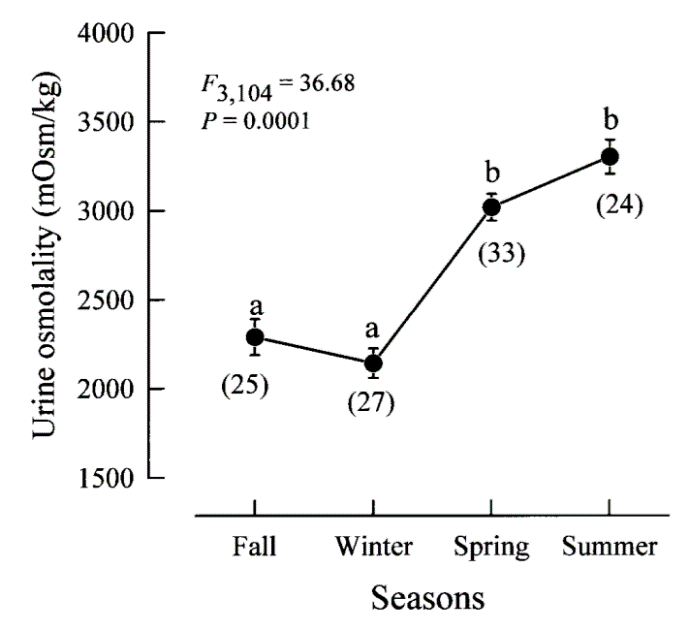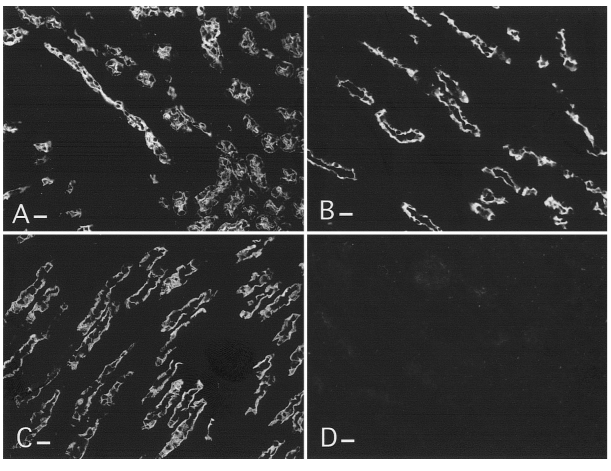Introduction
The main objective of physiology is to observe, describe, and analyze the various processes that occur within biological organisms. Through these procedures, the field provide new knowledge in regard to the profound mechanisms of animal and human bodies. The data is applied across a range of adjacent disciplines, utilizing the physiological potential of an organism to a fuller extent. In this regard, excretion is one of the key biological processes that serve as the subject of intense interest for researchers. It reflects the ability of an organism to maintain self-regulation, eliminating the waste produced by other systems of the body. Furthermore, excretion helps to maintain the biochemical balance of a body, often becoming adjusted to the external context of living. In other words, the patterns of excretion are subject to change depending on the environment in which a body seeks to optimize its functioning. This effect is attained through excreting the excessive, unrequired, or even dangerous chemical compounds, while retaining the elements that may support the body’s functioning. In a way, excretion variations reflect the natural physiological strive to survive, fully utilizing the self-regulation potential.
This paper focuses on the process of excretion in rodents, aiming to synthesize and evaluate the current body of academic knowledge. Two detailed primary research reports are analyzed that explore this topic, applying the new analysis framework to describe it. In fact, rodents represent an area of increased interest for such research, as these animals are generally known for their abilities to survive in harsh environments, often characterized by the shortage of food and clean potable water (Korine et al., 2003). More specifically, both primary research papers discussed in this report focus on the survival of rodents in the extreme conditions of a desert. In this regard, the physiological processes of excretion play a role of paramount importance in maintaining the functioning of the organism in spite of the high temperature amplitudes and water shortage (Huang et al., 2001). Gallardo et al. (2005) state that the organisms of desert rodents “display physiological features that favor body water conservation, such as efficient kidney function, low fecal water content, and comparatively low evaporative water loss” (p. 145). These factors are of increased interest for research, as they show how excretion contributes to rodents’ survival potential. Comparing Gallardo et al. with Huang et al. in regards to retention and conservation in water channels, living conditions, and the balance between survival mechanism and the environment, it is planned to gain a better understanding of how environmental and physiological modifications should be treated to adjust to new conditions and demonstrate solid biological performance.
Critical Analysis
Retention and Conservation in Water Channels
The present report compares and evaluates the findings presented in two research papers that address the excretion in desert rodents. The study by Huang et al. (2001) elaborates on the previously observed inconsistencies in terms of aquaporin-4 water channel presence in rodents. As per their preliminary findings these channels were found in mice’s renal proximal tubes but in the same organs of rats. Thus, the authors conducted an empirical study that sought to investigate the role of aquaporin-4 as a “major contributor to the urinary concentrating mechanism in mammals” (Huang et al., 2001, p. 795). The research by Gallardo et al. (2005) was tailored to discuss the intersection of rodents’ excretion functions with their survivability potential in deserts. Accordingly, the main contribution of their empirical study was to illustrate further the physiological adaptation of rodents to the life in extreme conditions. More specifically, the emphasis was on the retention and conservation of water, which is the resource that exhibits the most serious shortage in such natural habitats.
In terms of the research rationale, both papers rely on scientific facts that provide avenues for subsequent discussions. Previously, Huang et al. (2001) observed the absence of aquaporin-4 water channels in the kidneys of rats, as compared to mice. These findings prompted the authors to investigate the role of this membrane protein in the excretion processes of rodent organisms. Furthermore, Huang et al, (2001) noticed that aquaporin-4 “was localized not only to principal cells of the collecting duct but also to basolateral membranes in the S3 segment of the proximal tubule” (p. 794). This observation prompted them to suggest that there might be a correlation between the localization of aquaporin-4 and urine concentration in rodents. More specifically, aquaporin-4 was not detected in the kidneys of desert rats, implying that it does not have a strong influence on the urine concentration in mammals.
Simultaneously, the second study approaches the matter from the perspective of water conservation as a survival mechanism for desert-based mammals. As shown in Figure 1, Gallardo et al. (2005) theorize that the seasonal availability of water resources in desert interacts with the functions of rodents’ kidneys. Their research is equally related to the role of aquaporins in water transportation and preservation within rats’ excretion systems. Gallardo et al. (2005) state that the absence of aquaporins-1, -2, and -3, is associated with major urine-concentrating defects, whereas the lack of aquaporin-4 only results in mild effects. Thus, their study is based on a logical assumption that the state of water balance primarily modifies the distribution of aquaporin-2 and aquaporin-3.

Importance of Living Conditions
Both studies were completed within an empirical framework with variations in terms of data collection. Huang et al. (2001) worked with the internal organs of the desert kangaroo rats, namely their kidneys, stomachs, and livers. For the purposes of the study, the organs were removed in the laboratory and dissected into several slices. Next, the pieces were subjected to a series of biochemical tests, including immunocytochemistry and in situ hybridization, to observe the presence of specific proteins in the tissue. On the contrary, Gallardo et al. (2005) completed their procedures on live rats that were trapped in the field. The core of their methodology revolved around the comparison of two datasets, one being obtained in the natural habitats of the leaf-eared mice and the other – in the laboratory. Only after that, the test mice were killed and had their kidneys removed for the immunolocalization of aquaporins. Both methodologies reflected the purposes of their respective studies, but the second one also included the measurement of urine concentration in living rodents, which contributed to the practical validity of the research. The chosen methodologies contribute to a better understanding of the living conditions for rodents.
Balance Between Physiological Mechanisms for Survival and the Environment
Ultimately, both procedures returned tangible results that provide new knowledge in regard to the aquaporins in rodents’ excretion systems. Huang et al. (2001) observed the characteristic staining of aquaporin-1 and aquaporin-2 antibodies in the examined kidneys of rodents. A similar outcome was attained in the case of aquaporin-3, whereas aquaporin-4 staining was not observed in the kidneys of the subjects as show in Figure 2. The highest rate of AQP4 was, in fact, registered in the stomach of the species. These findings suggest that the expression of aquaporin-4 RNA is suppressed in the kidneys of kangaroo rat species. The results obtained by Gallardo et al. (2005) showed urine concentration variations depending on the availability of water resources with higher numbers in dry periods. Next, as per the findings of the immunolocalization, dehydration led to a trifold increase of AQP2 presence in test subjects. At the same time, the state of water balance did not have an observable effect on the distribution of AQP4 within the rodent’s organism.

The presented findings suggest that aquaporins play a role of paramount importance in maintaining the water balance of desert-based rodent species. Both research groups discussed the ideas of urine concentration dependency on these proteins and their particular varieties. In the case of Huang et al. (2001) a suggestion was made that AQP4 is not as vital for this phenomenon, as implied by the results of their research. This standpoint was further confirmed by Gallardo et al. (2005), who elaborated on the previously available knowledge. From these outcomes, it becomes evident the urine concentration levels of rodents are subject to variations depending on the water balance. Thus, these alterations reflect the animals’ survival mechanisms in the desert environment. In other words, the excretion system plays a major self-regulatory role that helps rodents overcome the consequence of scarce water supplies. While aquaporins are integral to this mechanism, AQP4, in particular, does not correlate with it.
Future Experiments
In light of the studies analyzed, it is possible to outline the directions of further research. First of all, the findings of both experiments align in terms of the AQP4’s role in the excretion system-based water regulation. However, both studies focused on the specific desert-based species. It appears that the expansion of the scope to encompasses a broader variety of rodent species will contribute to the formation of concrete theories in regard to the subject matter. Furthermore, the tendencies in question may be different for the climate zones other than deserts. Different environments pose varying challenges for the water balance of the species, meaning that AQP4 may take a more important role in a new setting.
Using the results offered by the authors of the two articles, there are several critical expectations and hopes. First, future experiments should help highlight the functional role of AQP4 in rodents’ kidneys if enough access to water resources is and is not provided. Second, certain attention must be paid to seasonal regimes, including warm and dry conditions. Finally, it is expected that water-sparing mechanisms could demonstrate various outcomes regarding the ability to cope with water balance maintenance under different conditions. All these findings will be helpful in understanding the worth of flexible renal mechanisms of rodents in xeric and semi-xeric regions. In both projects, the conclusions are justified with the results and suggest that AQP4 renal expression may be regulated at several levels if there is a balance between the environment and the chosen physiological mechanisms.
References
Huang, Y., Tracy, R., Walsberg, G. E., Makkinje, A., Fang, P., Brown, D., & Van Hoek, A. N. (2001). Absence of aquaporin-4 water channels from kidneys of the desert rodent Dipodomys merriami merriami. Communications of the AC American Journal of Physiology – Renal Physiology, 280, 103–108.
Gallardo, P. A., Cortes, A., & Bozinovic F. (2005). Phenotypic flexibility at the molecular and organismal level allows desert‐dwelling rodents to cope with seasonal water availability. Physiological and Biochemical Zoology: Ecological and Evolutionary Approaches, 78(2), 145–152. Web.
Korine, C., Vatnick, I., van Tets, I. G., & Pinshow, B. (2003). New observations on urine contents in water-deprived Negev Desert rodents. Canadian Journal of Zoology, 81(5), 941–945. Web.